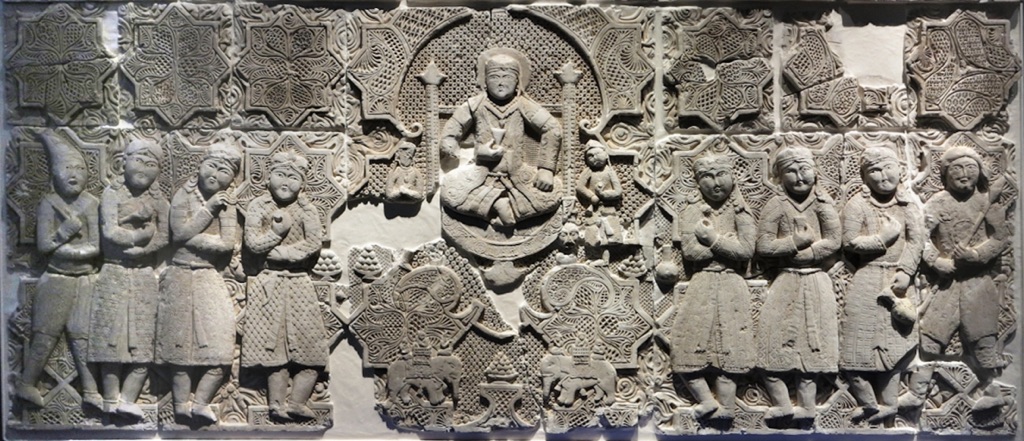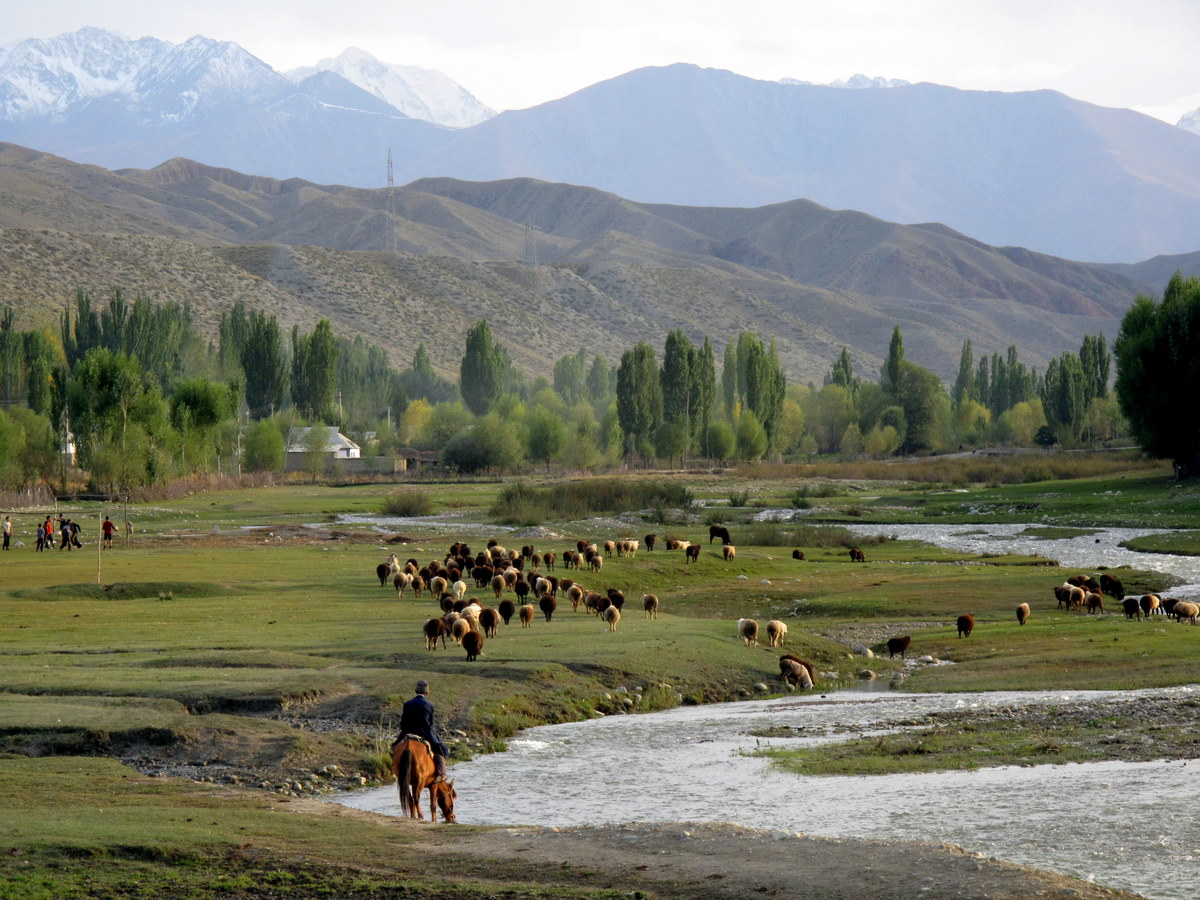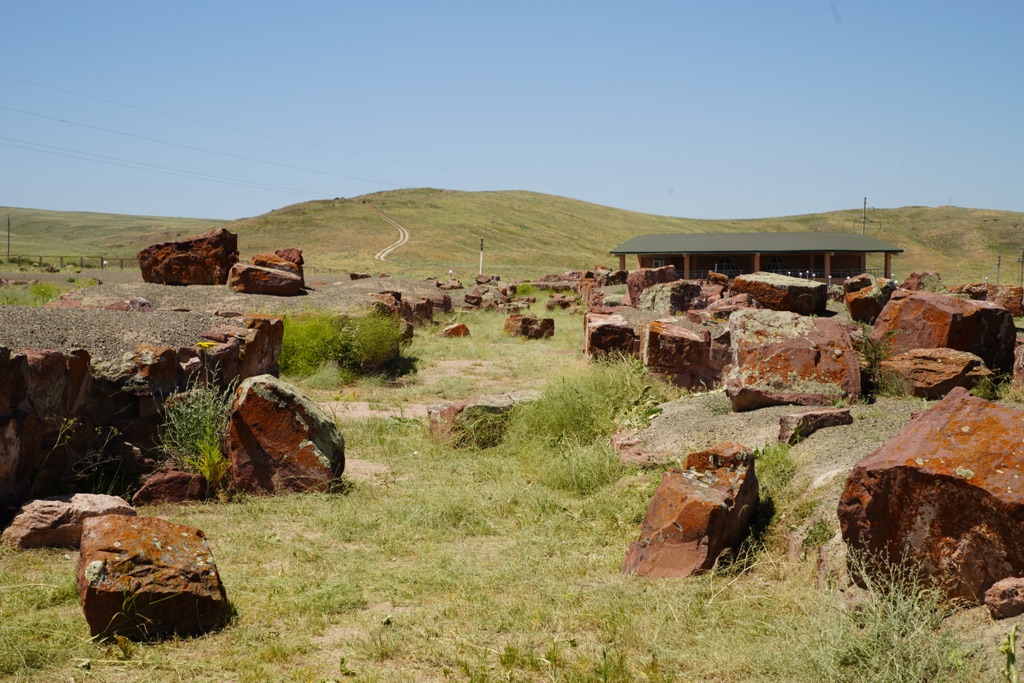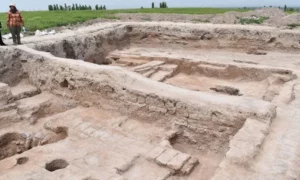The Ancient City of Suyab, once a significant Silk Road hub, lies in the territory of modern Kyrgyzstan. It thrived as a crossroads of cultures and commerce, linking the East and West. Suyab was a melting pot of various peoples, including the Sogdians, Chinese, Turks, and others. Its strategic location made it a political and economic center in Central Asia, particularly during the Tang dynasty and the period of the Turkic Khaganate.
Western Turkic Khaganate

The Western Turkic Khaganate, also known as the Onoq or the Western Göktürks, was a prominent political entity in Central Asia and parts of Eastern Europe from the mid-6th to the late 7th century. It emerged following the split of the First Turkic Khaganate into the Eastern and Western khaganates around 603-604 AD, due to internal conflicts and the expansive nature of the Turkic realm. The Western Turkic Khaganate encompassed a vast area, stretching from the Caspian Sea in the west to the Tarim Basin in the east, and from the Siberian steppes in the north to the Hindu Kush mountains in the south. This strategic location facilitated control over the lucrative Silk Road trade routes, significantly influencing the economic and cultural exchanges between the East and the West.
The political structure of the Western Turkic Khaganate was based on a confederation model, with the khagan (supreme ruler) at its apex, supported by a council of tribal leaders. This decentralized system allowed for the integration of various nomadic tribes under a common leadership while maintaining their autonomy. The khaganate was known for its military prowess, primarily relying on cavalry units that were highly mobile and skilled in archery. These attributes made the Western Turks a formidable force in the region, capable of projecting power over vast distances and exerting influence over neighboring states and empires.
The Western Turkic Khaganate played a crucial role in the geopolitics of Eurasia during its existence. It engaged in complex diplomatic and military interactions with major contemporary powers, including the Byzantine Empire, the Sassanian Empire, and the Tang Dynasty of China. These relationships were characterized by fluctuating alliances and conflicts, as the Western Turks sought to expand their influence and control over the Silk Road. Notably, their involvement in the power dynamics of the region contributed to the spread of Turkic culture and the Turkic language family across Eurasia.

One of the significant challenges faced by the Western Turkic Khaganate was internal fragmentation due to tribal rivalries and succession disputes. The decentralized nature of their political system, while allowing for flexibility and autonomy, also made it difficult to maintain cohesion and unity, especially under weak khagans. This internal strife weakened the khaganate and made it vulnerable to external threats. By the late 7th century, the Western Turkic Khaganate began to disintegrate under the pressure of external invasions, particularly by the Tang Dynasty, which sought to secure its western borders and control over the Silk Road.
The decline of the Western Turkic Khaganate culminated in its eventual conquest by the Tang Dynasty in 657 AD, marking the end of its sovereignty. The territories of the former khaganate were incorporated into the Tang Empire, although Turkic tribes in the region continued to resist Chinese control, leading to further conflicts. Despite its fall, the legacy of the Western Turkic Khaganate endured, particularly in the spread of Turkic peoples and cultures across Central Asia. The khaganate’s influence is evident in the subsequent formation of Turkic states and the continued prominence of Turkic languages and cultural practices in the region.
The Western Turkic Khaganate represents a significant chapter in the history of Central Asia and the broader Turkic world. Its establishment, rise, and eventual fall reflect the dynamic and often tumultuous nature of nomadic empires in Eurasian history. The khaganate’s role in controlling and facilitating Silk Road trade contributed to the cultural and economic exchanges that defined the medieval period. Furthermore, its interactions with neighboring empires and states highlight the interconnectedness of Eurasian civilizations. The Western Turkic Khaganate’s legacy continues to be a subject of interest for historians and scholars, offering insights into the complexities of nomadic statecraft, international relations, and cultural diffusion in pre-modern Eurasia.

Akyrtas
Akyrtas is a mysterious and ancient archaeological site located in Kazakhstan. It features the ruins of a massive stone structure, which has puzzled historians and archaeologists for years. The origins and purpose of Akyrtas remain a subject of debate, with various theories suggesting it was a palace, monastery, or an astronomical observatory. Despite its enigmatic…

Koshoy Korgon (Qoshoy Qorgon)
Koshoy Korgon is an ancient fortress located in the At-Bashy district in Kyrgyzstan. It stands as a testament to the region’s historical significance, particularly during the period of the Turkic Khaganate. The site is a sprawling ruin, indicative of a once-mighty stronghold that played a crucial role in the defense and administration of the area. Its earthen walls, although now eroded, outline the formidable structure that would have been a hub of activity in its heyday.

